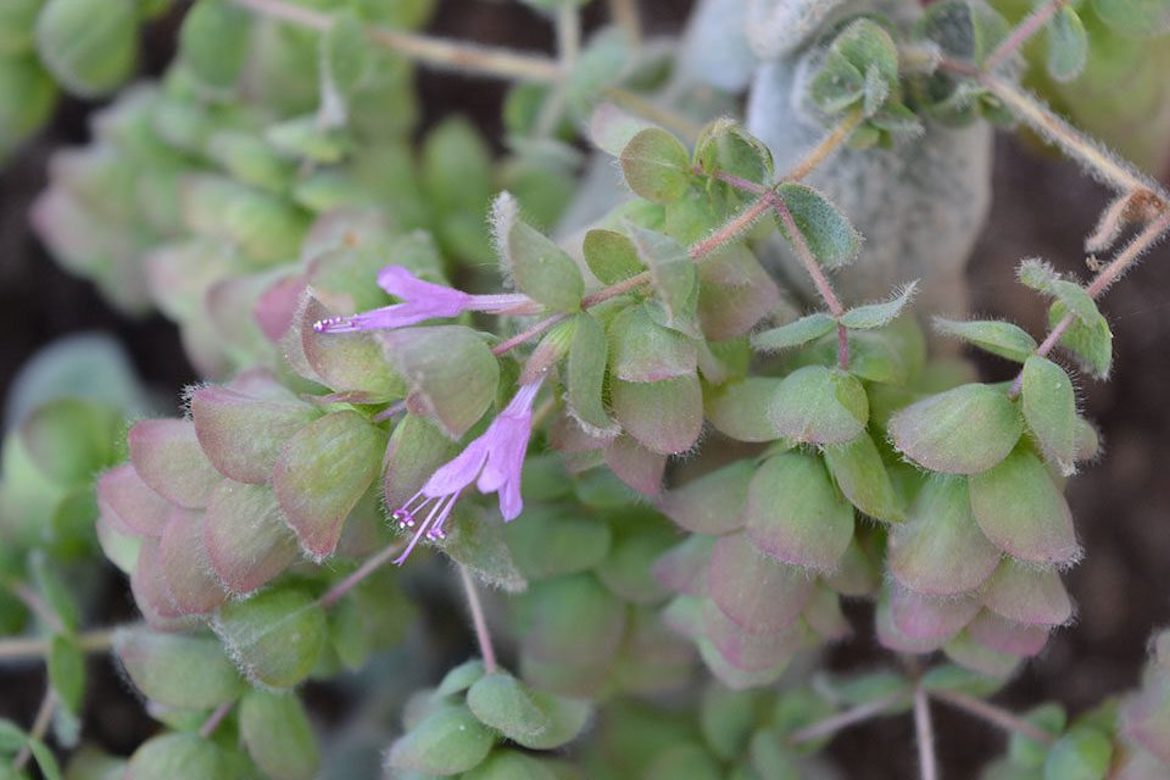Gastronomists around the world are raving about this Greek functional herb.
Lesser known than oregano, thyme, and sage, dittany (diktamo in Greek – δίκταμο) is an herb that only grows in Crete, Greece. It doesn’t grow anywhere else in the world.
Read on to learn more about dittany, why it’s highly recommended, and how to incorporate it into your life.
What is dittany?
Ancient Greeks used dittany of Crete as medicine in the form of tea and tinctures. It could treat and prevent issues like cough, colds, digestion, and skin irritations, to name a few. Modern studies confirm some of the health benefits Greeks already knew about this functional herb.
Additionally, the Cretan mountain goddess Dictin reportedly used the plant to support women giving childbirth. [1] It was known to be an aphrodisiac that supported fertility!
Additionally, the Greek goddess Artemis of wild nature, hunting, chastity, and childbirth, supposedly adorned a crown made with dittany. [1]
Recommended by gastronomists for its flavor
Some individuals have dismissed dittany as being “too strong for cooking” and “too medicinal” [1] for cooking. While it has been traditionally used as a tea and as a tincture, there were not been many well-documented culinary uses.
Gastronomists set out to change dittany’s culinary reputation for the better. They used dittany for various food case studies for the International Journal of Gastronomy and Food Science. [2] These tasty foods included:
- Cherry pie with dark chocolate and syrup infused with dittany
- Beef meatballs with marinated oven leeks and bechamel sauce
- Fish-egg salad
- Marinated rabbit with pearl onions and sweet potato
- Salad with French beans, Greek yogurt sauce, and sunflower seeds
These are all fine culinary examples of how even just small amounts of Cretan dittany can elevate your cooking game for both sweet and savory Mediterranean dishes. The gastronomists noted these dishes resulted in “interesting and original mild flavors” [2], showing promise for dittany’s use in gastronomy.
The researchers then tested the same dishes with double and triple the amounts of dittany. The panelists described the doubled concoction as delivering “an intense mouthfeel sensation with sudden fresh explosions of aromas by the chewing of chopped Dittany, which easily travels up from mouth to nose.” [2]
Additionally, the tripled amount was too aggressive and intense for the panelists’ taste buds. So, it’s best to stick with small amounts of dittany for cooking purposes.
How to use dittany
Even if you aren’t a culinary expert, there are many simple ways to enjoy Cretan dittany from the comfort of your home:
- Sprinkle on your favorite Mediterranean dishes
- Incorporate it into sauces including fish sauce and pasta sauce
- Drink as a tea for its digestive properties
- Try using it as a tincture to help heal minor wounds
- Pair it with mint and add to water for a refreshing mouthwash after brushing your teeth
When in doubt, a little bit of dittany goes a long way – you don’t have to add large amounts!
The bottom line
According to researchers in the International Journal of Gastronomy and Food Science, “dittany of Crete meets all necessary requirements to be introduced as a new, interesting and unique spice for culinary use which is accompanied with important medicinal properties, thus rendering it as a potential functional food.” [2]
If you’re interested in trying out a new herb in the kitchen, don’t miss out on dittany of Crete.

Click here to shop olivegrovemarket.com
References
- The Herb Society of America, 2005 The Herb Society of America. 2005. Oregano and Marjoram, an Herb Society of America guide to the genus Origanum. Kirtland, Ohio, USA.
- Krigas N, Lazari D, Maloupa E, Stikoudi M. Introducing dittany of crete (Origanum dictamnus L.) to gastronomy: a new culinary concept for a traditionally used medicinal plant. Int J Gastro. Food Sci. 2 (2) (2015), pp. 112-118, 10.1016/j.ijgfs.2015.02.001
About the author
Chrissy Arsenault, MBA, RDN, LD, is a registered dietitian nutritionist and licensed dietitian based in Indianapolis. She obtained her bachelor of science in nutritional science at Cornell University and her MBA at Indiana University Kelley School of Business. She is the founder and CEO of a nutrition communications firm called Pink Pamplemousse LLC, where she creates engaging nutrition and wellness content for clients. She has also coached clients on various health conditions including heart disease, obesity, digestive issues and diabetes over the last seven years. Visit Chrissy’s website.
Is The Pappas Post worth $5 a month for all of the content you read? On any given month, we publish dozens of articles that educate, inform, entertain, inspire and enrich thousands who read The Pappas Post. I’m asking those who frequent the site to chip in and help keep the quality of our content high — and free. Click here and start your monthly or annual support today. If you choose to pay (a) $5/month or more or (b) $50/year or more then you will be able to browse our site completely ad-free!

Click here if you would like to subscribe to The Pappas Post Weekly News Update
